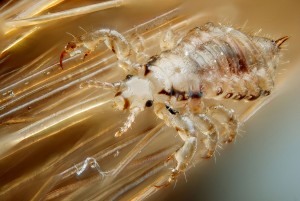Here you will find an overview of all our articles on lice. The theme focuses on the three species of lice that live on humans:
You can read about dog lice and cat lice here.
The rest of the articles in the theme are about two things: 1) how to treat lice and 2) which lice remedies are most effective:
Treatment
In addition, we have also gathered a number of Frequently asked questions about licewhere you can read about what lice look like, their life cycle, Eggs, Well-being in bedding etc.
In the rest of this article you can read more about lice in general.
What are lice?
Lice are small wingless insects that suck blood from humans and animals. There are approximately 5000 species of lice, all belonging to the order Phthiraptera. Of the 5000 known lice species, around 4000 are bird lice and around 800 are mammal lice.
All lice are so-called obligate parasites, which means they can only complete their life cycle if they find a suitable host. If this fails, lice cannot reproduce.
Lice can live on all warm-blooded animals with the exception of monotremes (Monotremata), mantids (Manidae), bats (Chiroptera) and cetaceans (Cetacea). Lice live wherever their host animals live. They are even found at the South Pole, where penguins can carry up to 15 different species of lice.
Lice can also act as intermediate hosts for diseases such as typhoid fever.
3 human lice species
Head lice are usually found in the hair. Head lice are most common in children. However, adults can also get head lice - especially if they live with children. Women and girls are generally more prone to head lice than men and boys, due to the fact that they tend to have longer hair.
Crabs are usually found around the genitals but can also be found in facial hair, eyelashes, eyebrows, eyebrows, armpits, chest hair and, in rare cases, the scalp.
Body lice live in the seams of clothing. This is also where they lay their eggs. Body lice only stay on the human body when they feed.
Interesting facts about lice
- Body lice have the smallest genome of any known insect
- Lice have been everywhere in human societies up until the Middle Ages (in some places even later)
- Lice are featured in folk songs, stories and songs from around the world
- Lice are species-specific - i.e. each lice species only attaches to one type of host (this is why lice from pets cannot infect humans and vice versa)
- Most hosts only have one or two species of lice that can live on them, but humans have three!

